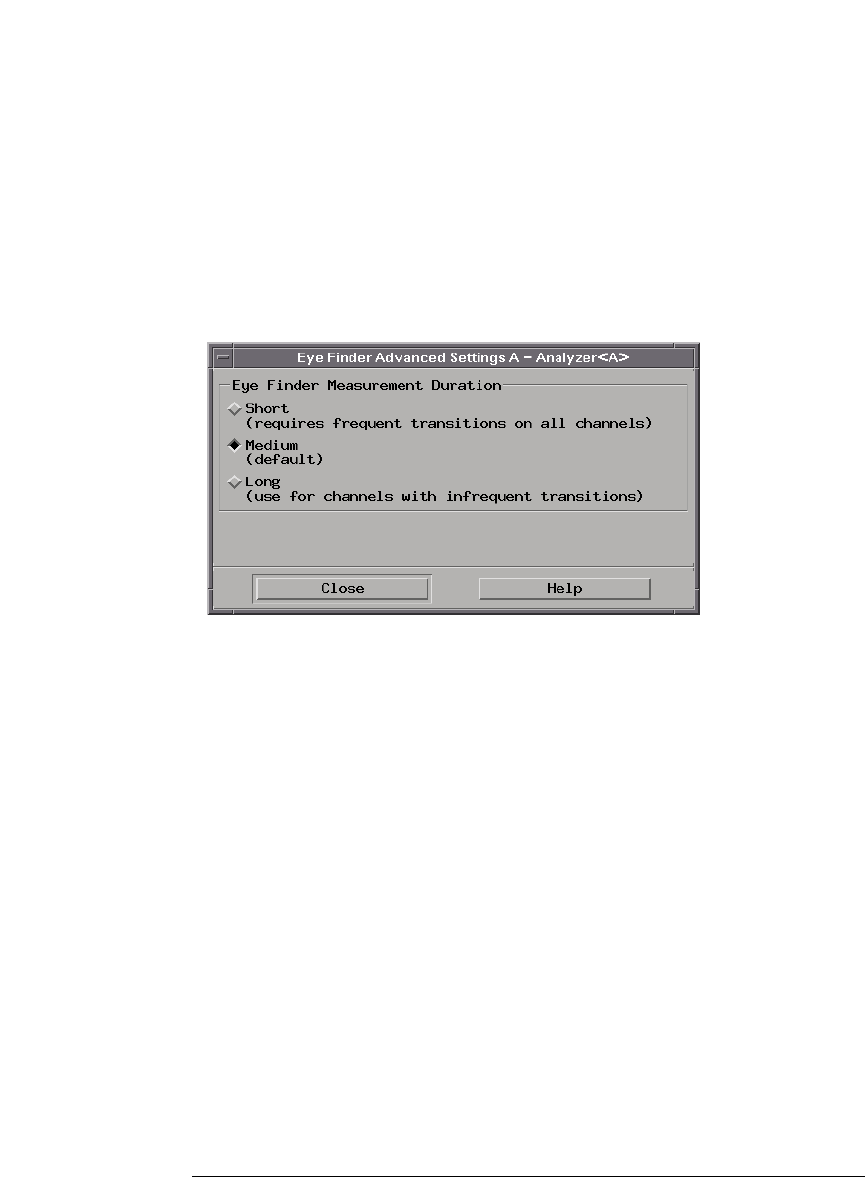User's Manual
Table Of Contents
- Agilent Technologies 16750A/B Logic Analyzer
- Agilent Technologies 16750A/B Logic Analyzer
- Contents
- Getting Started
- Step 1. Connect the logic analyzer to the device under test
- Step 2. Choose the sampling mode
- Step 3. Format labels for the probed signals
- Step 4. Define the trigger condition
- Step 5. Run the measurement
- Step 6. Display the captured data
- For More Information...
- Example: Timing measurement on counter board
- Example: State measurement on counter board
- Task Guide
- Probing the Device Under Test
- Choosing the Sampling Mode
- To select transitional timing or store qualified
- Formatting Labels for Logic Analyzer Probes
- Setting Up Triggers and Running Measurements
- Displaying Captured Data
- Using Symbols
- Printing/Exporting Captured Data
- Cross-Triggering
- Solving Logic Analysis Problems
- Saving and Loading Logic Analyzer Configurations
- Reference
- The Sampling Tab
- The Format Tab
- Importing Netlist and ASCII Files
- The Trigger Tab
- The Symbols Tab
- Error Messages
- Must assign Pod 1 on the master card to specify actions for flags
- Branch expression is too complex
- Cannot specify range on label with clock bits that span pod pairs
- Counter value checked as an event, but no increment action specified
- Goto action specifies an undefined level
- Maximum of 32 Channels Per Label
- Hardware Initialization Failed
- Must assign another pod pair to specify actions for flags
- No more Edge/Glitch resources available for this pod pair
- No more Pattern resources available for this pod pair
- No Trigger action found in the trace specification
- Slow or Missing Clock
- Timer value checked as an event, but no start action specified
- Trigger function initialization failure
- Trigger inhibited during timing prestore
- Trigger Specification is too complex
- Waiting for Trigger
- Analyzer armed from another module contains no "Arm in from IMB" event
- Specifications and Characteristics
- Concepts
- Understanding Logic Analyzer Triggering
- Understanding State Mode Sampling Positions
- Getting Started
- Glossary
- Index

133
Chapter 3: Reference
Importing Netlist and ASCII Files
If a channel appears in multiple labels, selecting that
channel will select it in each of those labels.
See Also “Understanding State Mode Sampling Positions” on page 208
“To automatically adjust sampling positions” on page 47
Eye Finder Advanced Settings Dialog.
Short Eye finder looks at 100,000 clock cycles on each channel
to determine the suggested sampling positions. This setting
requires frequent transitions on all channels.
Medium Eye finder looks at 500,000 clock cycles on each channel
to determine the suggested sampling positions. Use this for
channels that transition at a normal rate.
Long Eye finder looks at 2.5 million clock cycles on each
channel to determine the suggested sampling positions.
Use this setting if some channels have sporadic transitions.
Some things to consider when selecting among the eye finder
advanced settings are:
• Upper address bits that don't transition as frequently as lower address bits.
• Data buses that are driven by different circuitry at different times.
When different channels require different settings, you can run eye
finder on channel subsets to avoid using the Long setting on a large
number of channels.










